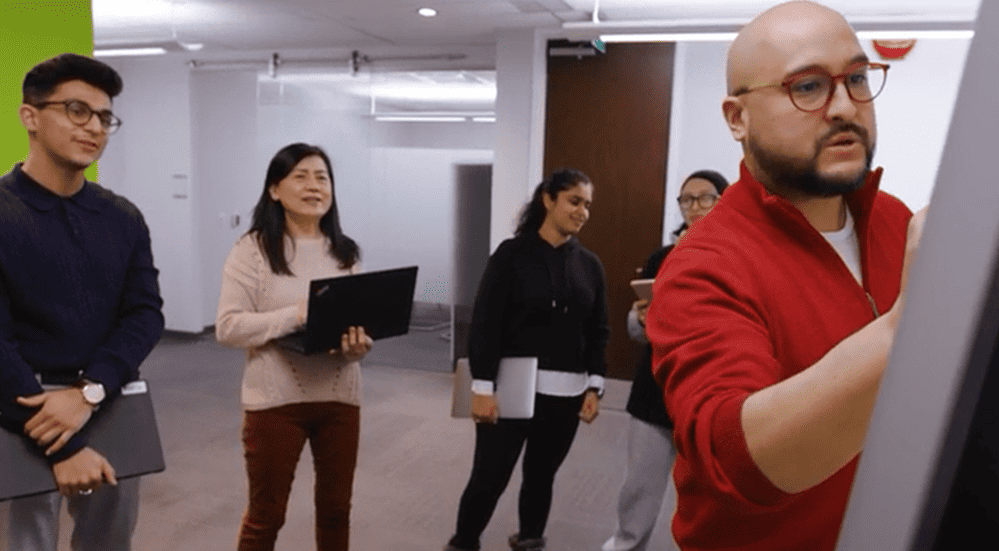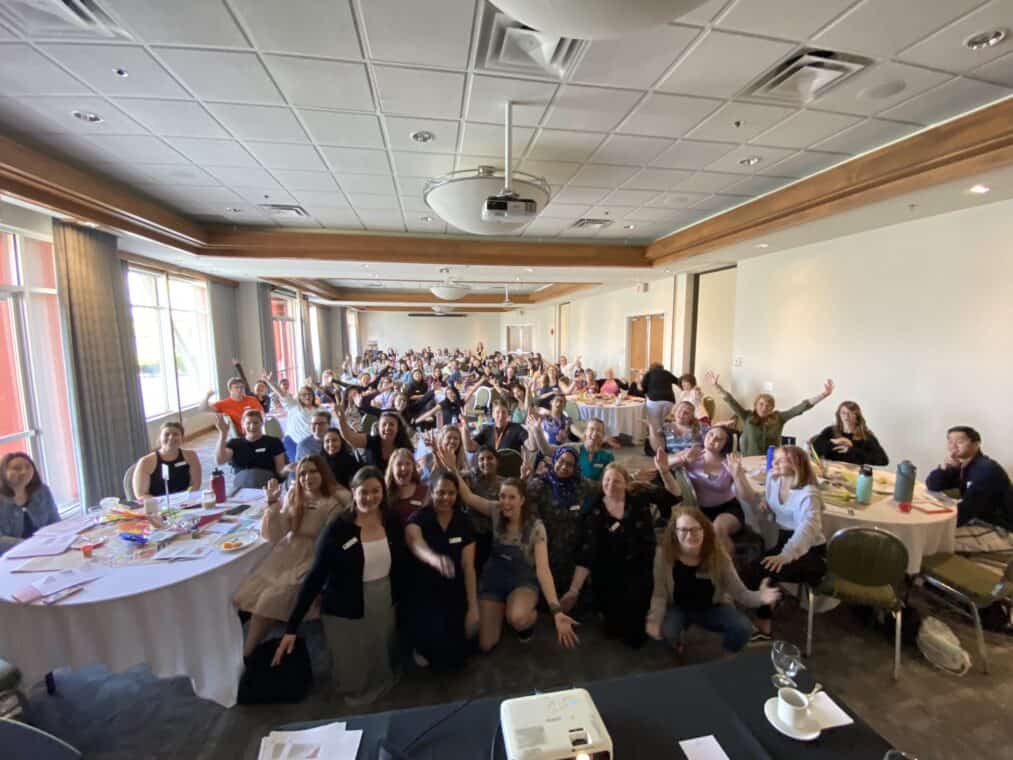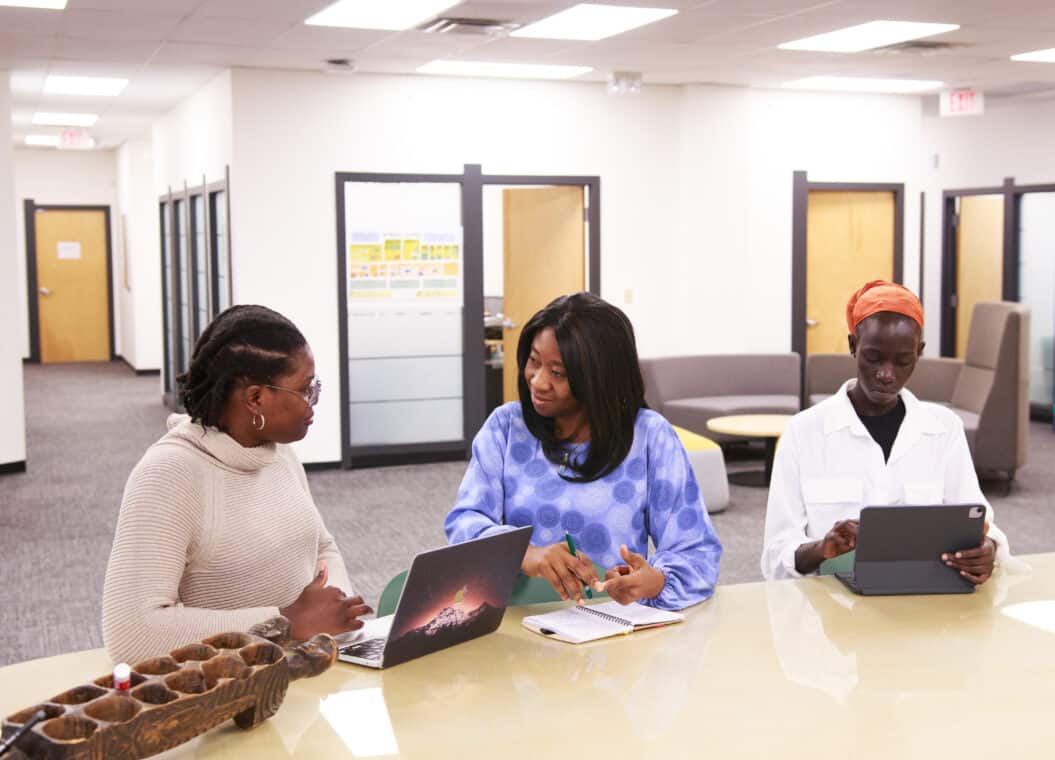With remote and hybrid work the new norm post-pandemic, non-profits are tailoring strategies to ensure that employees feel heard, seen, and valued – and have discovered that there’s no one-size-fits-all approach.
It feels like yesterday that the world was turned upside down. Overnight, our routines were disrupted, and we found ourselves questioning the very fabric of our work lives. Suddenly, the notion of having to be physically present in an office to get the job done was challenged. Yvonne Rodney explored this in “Rethinking the Role of the Office,” where she highlighted that for some, productivity improved while working from home.
The 2020 COVID-19 upheaval prompted us to rethink our daily commutes, the necessity of in-person meetings, and the true essence of office spaces. It became clear that we could be just as efficient and productive working from the comfort and safety of our homes. And just like that, remote and hybrid work became the new norm, revolutionizing the way we work, likely for good.
Eventually, however, the craving for physical connection resurfaced. While virtual connections served their purpose, there was a void left by the absence of in-person interactions. We began to yearn for the camaraderie, the casual chats by the coffee machine, and the sense of belonging that typically came with the pre-pandemic workplace culture. In their 2000 article on self-determination theory in American Psychologist journal, Richard M. Ryan and Edward L. Deci postulate that when people relate to and connect with others, they tend to be more motivated, engaged, and willing to invest effort in their activities. This theory accentuates the importance of belonging. We are, after all, social creatures wired to seek connection.
Remote and hybrid work have become the new norm, revolutionizing the way we work, likely for good.
A McKinsey survey from the spring of 2022 found that 35% of workers had transitioned to full-time remote work, with an additional 23% opting for a part-time remote arrangement. As this trend extends to all industries, including non-profit organizations, some questions arise: How are non-profits adapting to this seismic shift in work dynamics? How are they nurturing a sense of belonging and culture within the context of hybrid work? What are the desires and expectations of their workforces in this new world?
Tomas Chamorro-Premuzic and Katarina Berg, writing in the Harvard Business Review in 2021, stress that work is more than just a vehicle for productivity; it’s a platform for meaningful interactions that enrich our lives. This sentiment is echoed by the collective yearning for the “lost magic” that the office once brought – the human touch that made work truly feel alive and meaningful.
In today’s changing work landscape, where inclusivity is gaining importance on a global scale, workers want to feel heard, to be noticed, and to feel as if they belong. But in this new hybrid work world, does the non-profit workforce still feel connected? How does it fit in this landscape, and is it content?
Workers want to feel heard, to be noticed, and to feel as if they belong. But in this new hybrid work world, does the non-profit workforce still feel connected?
To understand how non-profits are fostering a sense of culture and belonging in the hybrid era, we spoke with some non-profit leaders and their employees and discovered that there’s no one-size-fits-all approach. Non-profit leaders are tailoring their strategies to suit their unique needs, all the while trying to ensure that employees feel heard, seen, and valued.
REACH Edmonton Council, an organization focused on increasing community safety and inclusion, has embraced a hybrid model that promotes flexibility without sacrificing team cohesion. Victoria Smith, a human resources specialist at REACH, says her team integrates cultural celebrations, knowledge-sharing sessions, and inclusive hiring practices to foster belonging among their diverse workforces. At REACH, employees are given the flexibility to choose the days they work from the office, with no specific mandate regarding the number of days they must be on-site. “This flexibility promotes a healthier work–life balance, or ‘life–work balance,’ as we choose to call it,” Smith says.
Flexibility promotes a healthier work–life balance, or ‘life–work balance,’ as we choose to call it.
Victoria Smith, REACH Edmonton Council
The YMCA of Greater Toronto takes a slightly different approach. Rahima Mamdani, the chief people officer, says certain roles demand in-person interaction. Her organization has embraced a hybrid model for its support function while maintaining in-person shift structures for roles that require physical presence. It has created “team days” and various social events to strengthen bonding and interpersonal connections among staff members.

At the YMCA of Southern Interior BC, Melaney Kothlow, director of people and culture, says that integrating diversity and inclusion are some of the key strategies they have implemented to foster belonging. “We have reached out to 10 of our very valued employees requesting that they join us in a 12-month commitment as we start having honest and non-judgmental conversations and discussions leading us to a place of shared knowledge,” she says. This knowledge will inform their plan to create and implement a more diverse and inclusive workforce. YMCA of Southern Interior BC has also created workspaces in each of its centres that can be reserved through Outlook calendars to encourage employees to connect with colleagues from other teams and departments.

But what about employees’ desires and expectations? What do they think non-profits could do to nurture a sense of belonging in this new era? “Making the workforce feel recognized, supporting their well-being, and providing opportunities for them to work across different areas are some of the ways non-profits can make them feel like they belong,” says Lolade Odeyemi, manager of digital communications at the Windfall Ecology Centre in Aurora, Ontario.
Femi Owolabi, a learning and development advisor with e4c Edmonton, a non-profit dedicated to helping vulnerable people by providing food security, shelter, housing, and education, says that involving workers in decision-making and equipping them with the tools and confidence to take ownership of their ideas are two ways that non-profits can foster a sense of belonging.
Making the workforce feel recognized, supporting their well-being, and providing opportunities for them to work across different areas are some of the ways non-profits can make them feel like they belong.
Lolade Odeyemi, Windfall Ecology Centre
Karen Adams, a social worker with British Columbia’s Day One Society, an organization focused on bringing hope, help, and healing to youth and adults experiencing challenges with substance use, says the creation of employee resource groups is a powerful tool that non-profits can leverage in fostering a sense of belonging. Unlike big companies, a non-profit might not have a massive team, but Adams believes that setting up these special groups based on shared interests or identities can be helpful in a hybrid world. These groups create a place where employees can connect with others who have similar experiences, even if they are from different walks of life. They are akin to forming little communities within the larger organization, which creates a sense of kinship and camaraderie. “It’s like having buddies who understand your struggles, cheer for your wins, and sometimes even do fun stuff together like community service or social events,” she says. “Through this, the workforce will build strong connections that go beyond just the workplace.”
Amid this hybrid revolution, some organizations are still actively promoting in-office work. Despite the convenience of remote work, some employees are being coaxed back to the physical workspace. Companies like Zoom, Amazon, and Disney have initiated policies that encourage office presence to revive the interpersonal magic that faded somewhat in the virtual world. In fact, a global study by Unispace found that 72% of companies surveyed say they have mandated office returns.
This is happening in the non-profit sector as well. The Council for Advancement of African Canadians in Alberta (operating as the Africa Centre) saw a decline in interpersonal interactions and physical connections, elements that were pivotal for delivering their services. This led the organization to fully embrace on-site work once again. Emmanuel Onah, the director of operations and youth programs, says the Africa Centre employed design-thinking principles to create spaces that foster collaboration and a warm welcome. In “Rethinking the Role of the Office,” Cameron Norman, who leads the strategic design firm Cense, describes design thinking as an approach that delves into people’s desires, aspirations, and requirements. This methodology involves interactive and participatory techniques to generate ideas and transform them into potential products or solutions.
Onah says that the Africa Centre’s primary focus was cultivating a comfortable and inviting environment, evoking a sense of home within the office. “We sought input from our workforce regarding their preferences for the new space, what they would like to see in this space, and we saw that this endeavour yielded notable increases in employee engagement and satisfaction,” he says. “Employees displayed a greater willingness to come to the office. They did not feel like they had to rush home anymore – some of them even stayed longer because they liked it there.”

Echoing this trend, an article on Global News highlights how companies are investing significantly to make in-office work an appealing choice, considering employees’ familiarity with the comforts of remote work over the past three years. This aligns with the Africa Centre’s approach of prioritizing the comfort and well-being of its employees – an approach that inherently fosters a sense of belonging.
However, an equally important aspect to consider when it comes to returning to the office, as highlighted in The Atlantic’s “Why the Remote-Work Debate Stays So Heated,” is that each person and group of workers has different needs and preferences. Working parents like being able to adjust their work hours to pick up their children from school. Some workers of colour have noted the benefit of being free from in-office microaggressions, and recent college graduates might lean toward office-based work to foster social connections.
Some workers of colour have noted the benefit of being free from in-office microaggressions, and recent college graduates might lean toward office-based work to foster social connections.
Notably, the physical space in which one works, or hopes to work, intersects with one’s most personal choices, and as such the decision regarding the adoption of a hybrid or in-person work approach can be intricate. Minal Bopaiah, a U.S.-based author and strategic consultant, suggests in her article “The Complexity of Equity in Remote Work” that deciding whether remote work is a good idea depends on what the job is all about.
Instead of asking whether a company should have everyone work remotely, Bopaiah says that it’s smarter to ask which jobs can be done completely from home, which ones need a hybrid arrangement, and which ones should be done in the office. The answers to these questions should focus on what is best for the organization’s goals and mission, rather than just what is easiest for managers to handle. This mirrors the approach embraced by YMCA.
The journey to nurturing a sense of belonging and culture within a hybrid workforce is as diverse as the organizations themselves. Non-profits should be ready to pivot and adapt as needed while consistently gauging the pulse of their workforces. Flexibility, open communication, and available support are vital in this new way of working.
While the workplace landscape has shifted, the essence of human connection and culture remains at the heart of it all. As we navigate this new era of work, let us remember that the magic of work lies not only in productivity but in the meaningful connections we forge along the way.
Stella Igweamaka is one of five writing fellows who will be sharing their storytelling talent in the upcoming months, and this is her first piece for The Philanthropist Journal. The fellowship is focused on the future of work and working and was made possible through funding and support from the Workforce Funder Collaborative.


